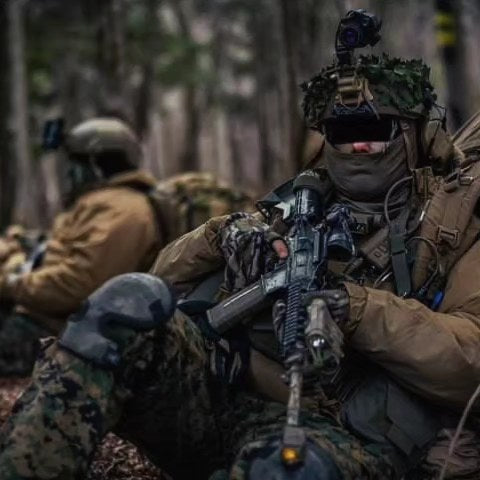Role of Camouflage
World War II changed the rules. Aircraft ruled the skies, tanks advanced quickly, bombings struck relentlessly. To survive, armies had to hide, blend into the environment, deceive the enemy.
Camouflage was no longer a detail—it became a silent weapon. Each army invented its own methods, experimented with colors, adapted strategies to the terrain.
This account follows the evolution of those techniques: from the roots inherited from World War I to the innovations of the 1930s, from adaptations across different fronts to the technological advances that still shape modern warfare.
The Origins and Evolution of Camouflage | Role of Camouflage
The Legacy of World War I | Role of Camouflage
In the trenches of 1914, the need became obvious: hide soldiers, disguise cannons, cover positions.
France created special units called camoufleurs. Painters and artists transformed shapes and colors into defensive weapons. Their patterns disrupted outlines, made a gun less visible, a shelter nearly invisible.
These first attempts were imperfect, yet they opened the way: a carefully designed uniform could save a life.
The 1930s: Toward Modern Warfare | Role of Camouflage
The world prepared for another conflict. Armies refined their methods.
-
Germany: Splittertarn patterns on uniforms and tanks, geometric shapes breaking the silhouette.
-
United Kingdom: creation of the Ghost Cleaners, units specialized in concealing heavy equipment.
-
United States: disruptive paint experiments on vehicles and armor.
-
USSR: techniques inspired by nature, suited to dense forests and vast snowy landscapes.
The rule was simple: a visible force is a vulnerable force.
Camouflage Across Theaters of Operations | Role of Camouflage
The European Forests
In wooded areas, soldiers and tanks disappeared beneath green and brown uniforms, covered with camouflage nets. Snipers perfected the use of the ghillie suit, a garment layered with grass and leaves, turning a man into a shadow among trees.
The Desert of North Africa
In the desert, the challenge was different. Wide open terrain, little cover. British and German tanks were painted in sand and brown shades. Patterns imitated the waves of the dunes. From the air, enemy pilots confused armor with the desert itself.
The Ruins of Cities
Urban warfare brought its own logic. Soldiers wore gray or brown uniforms. Vehicles were painted in dark gray tones. Ruins became allies, rubble a natural cover.
The Jungles of the Pacific
In dense vegetation, armies adapted again. Japanese and American troops wore green uniforms marked with brown, sometimes leafy patterns. Camouflage nets covered camps, supply depots, even aircraft. The jungle swallowed those who knew how to blend into it.
The Strategic Impact of Camouflage | Role of Camouflage
Normandy, 1944
The D-Day landings relied heavily on deception. Before the invasion, the Allies staged a vast illusion. Inflatable tanks, fake airfields, dummy ports.
Operation Fortitude fooled the Germans into watching Calais, while the real assault gathered in Normandy.
Ambushes and Infiltrations
Camouflage worked both for defense and attack. At Stalingrad, Soviet soldiers wore white uniforms, vanishing into the snow. In the Ardennes, German troops used forests to prepare ambushes. Disguise became the partner of silent assault.
Protecting Infrastructure
Airfields, bridges, factories—all prime bombing targets. Armies covered them with nets or wooden structures mimicking hills and houses. From above, enemy aviators saw only a harmless landscape, while the site remained operational.
Technological Innovations
Camouflage Nets | Role of Camouflage
Made of fibers, cloth, and natural dyes, these nets covered tanks, aircraft, and entire depots. Green for forests, brown for deserts. The principle remains unchanged today, though companies like Nutsof now produce modern versions—stronger, lighter, and useful to both soldiers and civilians.
Ghillie Suits | Role of Camouflage
The sniper’s weapon of invisibility. Each suit was unique, crafted with local vegetation—branches, leaves, grass. The marksman became a patch of landscape, waiting in silence.
Disruptive Paint | Role of Camouflage
Geometric shapes broke the outline of tanks. On ships, the famous Dazzle camouflage disrupted the perception of submariners. They saw the ship, but could not judge its speed or direction. Illusion saved crews.
Aerial and Naval Camouflage | Role of Camouflage
Aircraft were painted to match their missions: blue-gray bombers to blend into the sky, darker tones for low-flying attack planes. Ships adopted shades that merged with the ocean and horizon.
FAQ | Role of Camouflage
1. Why was camouflage vital?
Because it reduced losses, protected infrastructure, and created the element of surprise.
2. What types were most common?
Forest, desert, jungle, and urban ruins—each environment required its own camouflage.
3. Are camouflage nets still used today?
Yes. They remain essential in military operations and are popular among hunters, paintball players, and outdoor enthusiasts. Modern versions by Nutsof are highly effective.
4. What is a ghillie suit?
A sniper’s outfit covered in local vegetation, designed for near-total invisibility.
Conclusion
World War II transformed camouflage into a true military art. To remain unseen became as important as firing a weapon. To vanish, deceive, and surprise—that was the new rule. Forest, desert, jungle, city ruins… each environment demanded new methods, each army invented its own solutions.
These techniques never disappeared. They still shape modern strategy. They remind us that in war, cunning often weighs as much as power.
👉 To explore high-performance camouflage nets and equipment, discover Nutsof—gear designed to conceal, protect, and give the advantage.
Best regards,
The Nutsof Team
Advanced Camouflage & Defense Solutions
🌐 www.nutsof.com
Follow us on Facebook and Instagram for the latest in advanced military camouflage technologies.


